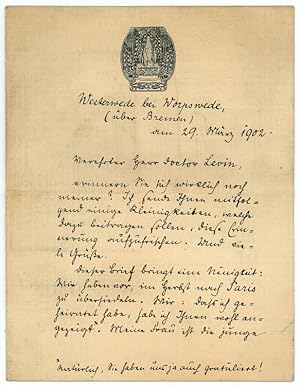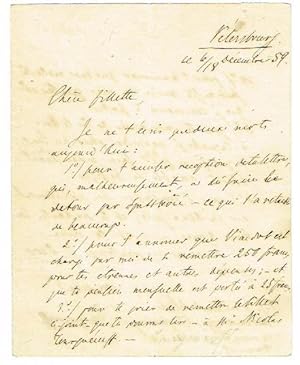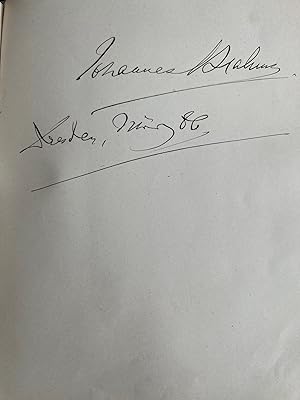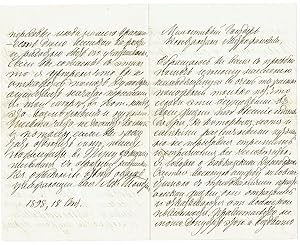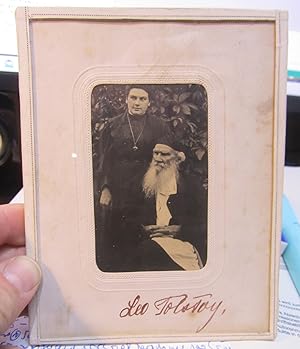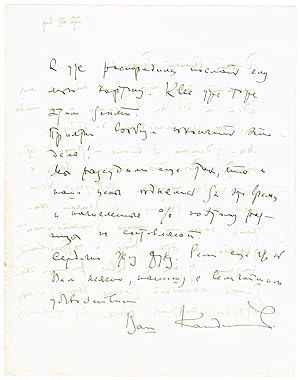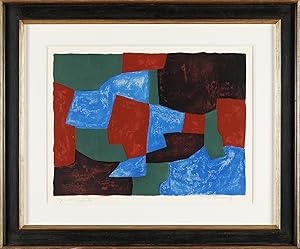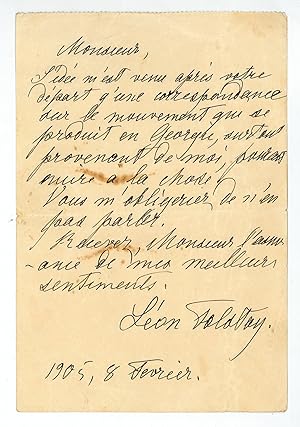russischer (Mehr als 104.000 Ergebnisse)
Produktart
- Alle Produktarten
- Bücher (96.410)
- Magazine & Zeitschriften (351)
- Comics (86)
- Noten (457)
- Kunst, Grafik & Poster (1.251)
- Fotografien (163)
- Karten (244)
-
Manuskripte &
Papierantiquitäten (5.829)
Zustand
Einband
Weitere Eigenschaften
Gratisversand
Land des Verkäufers
Verkäuferbewertung
-
Warhafftige Contrafactur, der Legation oder gesandten, des Groß Fürsten auß Moscaw, an die Römische Kayserliche Mayestat: Auch inn was Kleydung und gestalt, ein jeder gen Hof gezogen, da sie der Römischen Kayerslichen Mayestat den Credentz Brieff und Geschenk uberantwortet haben.
Verlag: Prague, Michael Petterle, [ca. 1576]., 1576
Anbieter: Antiquariat INLIBRIS Gilhofer Nfg. GmbH, Vienna, A, Österreich
Kunst / Grafik / Poster
(And:) Contrafactur: Der Kirchen Ceremonien, so die Moscowitter bey irem Gottesdienst gebrauchen, wie auff dem jetzigen Reichstag zu Regenspurg ist gesehen worden. Ibid., [ca. 1576]. 2 broadsides, together 1485 x 398 mm. In original, contemporary colour. Splendid group portrait in original contemporary colour, showing the Russian delegation of Tsar Ivan IV (the Terrible) at the Regensburg Diet of 1576. "The foreign, 'exotic' figures in their strange costumes were considered quite spectacular by the population as well as by the attendees of the Diet [.] As the broadsheet's title announces, the general readers' curiosity was satisfied by this illustration of all 28 delegates as well as by the brief account of their apparel. Further, the precious gifts (furs) were described" (cf. Völkl/Wessely, 21f.). The second broadsheet shows the Russian delegation at church service, before an altar decorated with icons. Again, word and image complement each other: the letterpress text below the impressive woodcut describes the illustration in verse. - Long attributed to Jost Ammann, the woodcuts have been more recently identified by Geisberg as works by Donat Hübschmann, painter to the Imperial court, who died in Vienna in 1583. He is known to have produced several illustrations of Herberstein's embassy to Russia, but also portraits of the sons of Emperor Maximillian II. It is likely that Hübschmann was present at the Regensburg Diet as part of the Imperial entourage and his woodcuts were based on his own observation. - The two broadsheets were published separately, each with its own colophon, and both are extremely rare even individually: the present specimens are the only ones ever to have appeared in the trade; auction and collection records show no other copies since 1950. OCLC lists only the prints in the Zurich Central Library, cut into sections and re-assembled on several cardboards (this is the source consulted by Völkl for his monograph study, cited below); another copy of only the first broadsheet is kept at the Germanisches Nationalmuseum, Nuremberg. KVK records not a single example in German libraries. One of the two original woodcuts at hand was reproduced by chromolithography in V. A. Prokhorov's "Russian Antiquities" (1872); copies of another reproduction, produced around 1880, are preserved at the Victoria and Albert Museum, London, and the Bibliotheque des Arts Decoratifs, Paris. - Several closed tears; lower edge shows insignificant waterstaining and fingerstaining. Conjoined as early in as the 16th century, as is evident from the black border surrounding both prints. Colours preserved with uncommon vividness; a very impressive ensemble. - From the collection of the Finnish printer Karl Gustav Kosk (1881-1957): the owner of the Helsinki publishing house "Yhteiskirjapaino oy" had received the prints as a gift on 5 June 1931, as noted in a dedicatory plaque on the reverse of the frame. Acquired from his descendants. - Geisberg, The German Single-Leaf Woodcut 1500-50, II, 833, 5 & 834, 6. Harms/Schilling, Deutsche illustrierte Flugblätter, Tübingen 1997, VII, 80 & 81. Wünsch, Der Wiener Maler und Formschneider Donat Hübschmann und sein Holzschnittwerk, in: Mitteilungen der Gesellschaft für vervielfältigende Kunst, 1913, no. 1, 1-13. Ekkehard Völkl, Kurt Wessely, Die russische Gesandtschaft am Regensburger Reichstag 1576, Regensburg 1976.
-
Vues pittoresques des palais et jardins impériaux aux Environs de St. Pétersbourg
Verlag: Lemercier, Paris, for Velten, St. Petersbourg,, 1828
Anbieter: PY Rare Books, London, Vereinigtes Königreich
Buch
In stunning colour --- "One of the best and most reliable collections of views of [St Petersburg] in the first half of the 19th century" (Makhlevich): a superb example of this large-format rarity, complete with its 22 lithographs, all in brilliant contemporary hand-colour. The Swiss artist Johann Jakob Meyer (1787-1858), "one of the best watercolourists of his time" (Nagler, quote from Makhlevich) arrived in Russia in 1842 and stayed there for around three years. Supposedly, in the autumn of 1844 Tsar Nicholas I himself commissioned Meyer to create a series of watercolours of St. Petersburg and Peterhof, Peter the Great's palace and Nicholas' favourite residence. As a result, Meyer's views include masterpieces of the Russian baroque, classical and neo-gothic architecture, set in various, sometimes romantic landscapes of St. Petersburg's surroundings. Thanks to the combined skills of the artist, the lithographer and the colourists, each scene is rendered in radiant and fresh colours, with lovely play of light and soft shadows, hazy and distant perspectives and remarkable reflections of the palaces and trees in the Neva river, the Gulf of Finland and garden lakes. "Preserved in very few copies, the album by Meyer [was of great help to] historians, [.] architects and engineers as valuable reference material for restoring palaces and museums that were destroyed during the war" (Makhlevich). It includes for example and among other palaces, buildings and follies, the Pavlovsk Palace (1780s), a notable example of palladian architecture in Russia by Charles Cameron, destroyed in 1941-44, and since rebuilt - like Tsarskoe Selo, Elagin, and Monplaisir Palace (1714-23), Peter the Great's favourite summer residence designed by the tsar himself. A plate shows the Menshikov Palace in Oranienbaum (1711-27), whose unprecedented luxury exceeded Peterhof in its scale at the time: together with the garden and the surrounding buildings, it is "the largest surviving ensemble of Peter's Baroque" (Raskin). Technological innovation is also present, with the Pavlovsk Railway Station (1838), the terminus of the first railway in the Russian Empire and at the same time "the first concert venue with orchestral music open to the public" (Kliuchnikova), destroyed during the WW2 and never rebuilt. An international publishing entreprise, this album was produced by a major St. Petersburg publisher of German origin, Iosif Felten (Velten), lithographed by Karl Schultz and printed by the prominent Parisian lithographer Joseph Lemercier. The plates may well have been available individually or as complete collection, in black and white, tinted and in colour: this was added by hand and, considering the highest quality of this copy's colour, most likely in Paris. This suite was sometimes completed with a few other plates by other artists (like in Efremov-Siniagin-Gubar copy, which had only 2 plates in colour), and were also used by Velten in a simplified, smaller version to add to views of the St. Petersburg's city centre. It is worth noting that these views belong to a rather small group of works focusing only on the palaces of the surroundings of the northern capital, without views of the city itself. The work include the following views: 1. Peterhof Palace church, 2. Pavlovsk Palace, 3. Monplaisir Palace in Peterhof, 4. Imperial Palace on Elagin island, 5. Oranienbaum Palace viewed from the garden, 6. English Palace in Peterhof, 7. Imperial Palace in Oranienbaum, 8. Palace of Duke of Leuchtenberg, 9. The Great Fountain at Peterhof, 10. Coffee House in the Summer Garden in St Petersburg, 11. Palace of Strelna, 12. Alexander Palace in Tsarskoe Selo, 13. Tsarskoe Selo Palace church, 14. Colonnade of the Tsarskoe Selo Palace, 15. Tsarskoe Selo Palace viewed from the "Chinese Bridge", 16. Palace of Grand Duke Mikhail Pavlovich on Kamennyi island, 17. Tsaritsyn Island in Peterhof, 18. Znamenskii Palace near Peterhof, 19. "The Cottage" palace in Alexandria park in Peterhof, 20. Gatchina Palace viewed from the courtyard [apparently mistakenly described as "from the garden"], 21. Gatchina Palace viewed from the garden, 22. The Pavlovsk railway station. This last plate depicts a soirée of the Russian gentry in the charming colonnade of the station, accurately showing different trends of local fashion, yet notably with the Russian flag coloured incorrectly. Very rare, especially with all plates in colour: we could locate only one such copy in public institutions worldwide, in Harvard, (also bound in full (green) leather). The other two holdings in Worldcat may be from other editions and do not mention any colouring (Kunsthaus Zurich Library and TU Darmstadt). All other copies we could trace, including in Russian libraries, are either incomplete or with black-and-white plates. Bibliographical details are mostly deficient, if not wrong; only Solovev seems to have had a fully coloured copy, but in a half-leather binding only. Provenance: Physical description:Landscape folio (35.6 x 53.9 cm). Title in chromolithograph integrating gilt and bronze lettering and with large vignette by Hancké, and 22 plates by Meyer lithographed by K. Schultz, captioned in French and Russian, numbered 1-22, with fine original hand-colouring with generous gum arabic highlights, some on beige paper, all leaves printed on thick card and with original tissue guards with corners ornately cut. Contemporary full brown morocco, covers with rich, deep blind-stamped ornaments, gilt fillets and gilt lettering in French, flat spine with gilt ornament, green glazed endpapers, all edges gilt. Condition:Binding rubbed with the occasional stain or scratch, spine head and foot restored, pastedowns showing the original glue, tissue guards with limited browner offset; occasional minor marginal soiling or tears, a couple of plates with minor marginal restoration, a handful at beginning with small reinforcement at gutter verso, and at end with the gouache lightly rubbed. Bibliogra.
-
Zeichnungen, 12 blätter in originalgrösse. [Folio of drawings, 12 sheets in original size.]
Verlag: Vienna: Buchhandlung Richard Lányi, 1917, 1917
Anbieter: Peter Harrington. ABA/ ILAB., London, Vereinigtes Königreich
Erstausgabe Signiert
First edition. One of 400 copies, signed, dated and numbered in ink pen by Schiele on the limitation page. The 12 heliotype prints consisting of portraits and nudes by Schiele were drawn between 1913 and 1917, printed by Max Jaffé in Vienna under the artist's supervision to the size of the original drawings. The negatives and printing plates were destroyed afterwards to ensure that it could not be reprinted. Schiele died just a year after this portfolio was issued. The prints contained in the portfolio are: I. Sitzende Frau mit hochgezogenem Knie, 1917; II. Männlicher Akt mit Rotem Tuch, 1914; III. Edith Schiele mit Windhund, 1917; IV. Torso eines knienden Mädchens, 1913; V. Freiwilliger Gefreiter, 1916; VI. Liegender Frauenakt, 1914; VII. Russischer Kriegsgefangener mit Pelzmütze, 1915; VIII. Zwei Mädchen, in verschränkter Stellung liegend, 1915; IX. Die Kauernde, 1915; X. Porträt eines Kindes (Anton Peschka, Jr.), 1916; XI. Bildnis der Gattin des Künstlers, 1917; XII. Kniender weiblicher Halbakt, 1917. Kallir p. 697. Folio. Original paper-covered portfolio with black cloth spine, front cover lettered and illustrated with a self-portrait by Schiele in black. Housing 14 loose sheets including the title with justification page on the verso and colophon page. Housed in a black cloth solander box by the Chelsea Bindery. 12 heliotype prints of varying sizes: smallest sheet size: 28.6 x 45 cm; largest sheet size: 32 x 49 cm. Covers of portfolio rubbed and soiled, lower inner flap detached, minor marks to edges of a couple of plates, otherwise in very good condition.
-
Pokhozhdeniia Chichikova, ili Mertvyia dushi. Poema [The Adventures of Chichikov, or Dead Souls. A Poem]
Verlag: Universit. Tip., Moskva,, 1842
Anbieter: PY Rare Books, London, Vereinigtes Königreich
Buch Erstausgabe
Gogol's masterpiece with "All of Russia" --- First edition of Gogol's landmark masterpiece: with the very rare printed upper wrapper. "One of the great novels of nineteenth-century Russia" (Fekula) by "19th-century Russia's greatest comic writer [and] one of the supreme masters of Russian prose" (Terras). Of Ukrainian birth and Russian expression, Nikolai Gogol (1809-52) began writing his "paradoxical epic" in 1836 at the encouragement of his friend, then already Russia's main poet Aleksand Pushkin who quickly "recognized [in Gogol] a unique and exceptional phenomenon" (Terras). Most of the next six years Gogol spent in Italy where he created his quintessential image of Russia in its diversity and contradictions. "The novel, in other words, is an artistic document that sought to include, alongside comic and lyric delight, "all of Russia" Russian types, manners, speech presented as a statement about Russia's current spiritual state, and about its ultimate destiny" (Terras). "Perhaps never had Gogol put so much worldly experience, heartfelt endearments and feigned anger into his work as he did in 1842 when he began publishing Dead Souls," the critic Pavel Annenkov later recalled. The novel's first censor in Moscow was afraid to give his permission for printing; Gogol then sent the manuscript to St. Petersburg through the influential critic Vissarion Belinskii, having asked for help Prince Vladimir Odoevskii, poet Petr Viazemskii, and his good friend, a maid of honour to the Imperial court, Aleksandra Smirnova-Rosset. Finally, Gogol rewrote some of the sensitive parts and allowed to change the title from "Dead Souls" to "The Adventures of Chichikov, or Dead Souls", thus shifting the emphasis from political satire to a picaresque novel. The "poem" was finally published in 1842 in 2400 copies; and Gogol's status of a contemporary classic became firmly established in Russian society: "with almost unanimous enthusiasm [.] he was now read by everyone, from Nicholas I to ordinary people and literary critics of all political views" (Babitskaia). Terras notes that Dead Souls galvanised "the powerful energies of 19th-century Russian fiction itself". The young Fedor Dostoevsky knew the novel by heart; in his Diary of a Writer he describes how he went "to see one of his old friends; we talked about Dead Souls all night long and read it I don't even remember how many times" (quote from Babitskaia). The next ten years of Gogol's life (1842-52) would centre around his vain struggles to complete the next two parts, as a parallel to Dante's Divine Comedy, but he deemed none of what he wrote worthy of publication. Shortly before his death, Gogol burned the second volume of his poem; its accidental surviving pieces and the writer's draft were later recomposed by the heirs and published in 1855 as an unfinished, posthumous second part; a third volume was never written. Provenance: Physical description:Large 8vo (25 x 17 cm). 475 pp. incl. half-title and title. Original illustrated upper wrapper bound in near-contemporary black half-sheep over brown marbled boards, flat spine with direct lettering in gilt, date at foot, dark grey floral endpapers, top edge red. Condition:Wrapper a bit stained and tightly bound in gutter, no lower wrapper; small spotting, foxing or staining throughout, mostly marginal, first lower fly-leaf with handwritten table of contents in Russian (such a leaf was never printed so it is not missing), small illegible ink stamp to last lower fly-leaf. Bibliography:Victor Terras, Handbook of Russian Literature, New Haven, Yale University Press, 1991, pp. 175-176. Varvara Babitskaia, "Mertvye dushi, Nikolai Gogol" // Polka academy, 2018. Fekula 4716; Kilgour 345; Smirnov-Sokolskii, Moia biblioteka, 610.
-
Sammlung von 7 eigenh. Briefe mit Unterschrift.
Verlag: Peredelkino , 12.V.1959 - 21.II.1960, 1960
Anbieter: Kotte Autographs GmbH, Roßhaupten, Deutschland
Manuskript / Papierantiquität
15 S. folio und gr.-4to. Deutsch und Russisch. Minimale Faltenrisse. Mit den Umschlägen (Briefmarken ausgeschnitten). Inhaltsreiche Korrespondenz an Rolf Dietrich Keil in Hamburg, den Übersetzer seines Gedichtbandes Wenn es aufklart" (Frankfurt a. M.: S. Fischer, 1960). Pasternak legt Keil detailliert seine Auffassung dar, wie Lyrik übersetzt werden solle. 12.V.1959, mit Glückwünschen zu dem glänzenden Diederichs-Büchlein". [ ] Ein Rilkeverehrer, konnte ich nie seine Michelangeloübersetzungen ebenso wie St. George s Sh[akespeare]sonette leiden. Es ist zu verwundern und unerklärlich, wie derselbe Mensch, dessen Sieg und Kraft in der Unmerklichkeit und Durchsichtigkeit der Mittel bestand, in der anspruchslosen Natürlichkeit der unstilisierten Sprache, so viel schwerfällige Künstlichkeit bei seinen Wiedergaben anwendete, dass die Anhäufung des Formellen von dem erstickten Inhalte ablenkt und den Sinn, die Bedeutung des Gesagten aus dem Gedichte beinahe verdrängt. Hingegen erfordern Uebersetzungen [ ] eine unbedingte Leichtigkeit und Klarheit [ ] Denn Uebersetzungen sind Kraftleiter, und nicht Energiequellen [ ]" 14.IX.1959, mit einer Bitte an die Fischers". [ ] Unter meinen vielen Korrespondentinnen in Deutschland gibt es auch manche in Dörfern und in der tieftiefsten deutschen Provinz. Eine von ihnen zeichnet sich besonders durch ihre Bescheidenheit und Herzensreinheit aus. Es kann leicht sein dass ich Ihr im Winter ein Schiwagoexemplar vom Verlag ver- sprach und davon vergessen hatte und darüber nach Frankfurt nicht schrieb. Uebermitteln Sie dem lieben Ehepaar meine aufrichtig ergebenen Grüsse und bitten Sie Herrn Dr. Ihr Werk (die Uebersetzungen des wenn es sich klärt ) beim Erscheinen (es wird ein Literaturereignis sein) [ ] der: Erika Naujokat [ ] gratis versenden zu wollen, und, wenn es nicht zu lästig ist, diese Erika zu befragen, ob sie ihren eigenen Schiwago hätte [ ]" 21.II.1960, wegen der Übersetzung eines Werkes über Chopin. [ ] den Sinn der Dichtung überhaupt, aller grossen Dichtung zu verstehen und selbst Dichter zu sein, unterscheiden zu können, was belebend wichtig, was unbedeutend nebensächlich ist in den Werken der Poesie, die doch keine feste Notarialakten sind sondern so zu sagen zuerst noch entstehende, sich bewegende Schaffenserscheinungen. Wie hat man mich immer geärgert, wieviel böses Blut mir gemacht bei meinen Shakesp[eare] und Goethearbeiten mit dieser Forderung der dummen tötenden Buchstäblichkeit, mit dem Verlangen, die Etuden zu wahren nicht bemerkend, dass mit dem Worte Wunderwesen und dem Reime Polonaisen der Nerv der lebendigen Genauigkeit viel eher getroffen wird, als mittels eines vierzeiligen unbeholfenen und nichts- sagenden Hinkens, um der, für einen fremden Versbau schwierigen ,Etüden halber! Was soll ich Ihnen sagen? Der Ihnen vorausbestimmte grosse Erfolg ist eine Gefahr für mich. Ueber den Glanz, den Schimmer, die Wärme, die Musik, das Noble, Edle, das Unaufhaltsame Ihres Buches wird man mich vergessen, denn das alles ist doch Ihr Verdienst [ ]"Gedruckt in: Raissa Orlowa, Lew Kopelew: Boris Pasternak", Stuttgart 1986. Beiliegend 3 e.Br.m.U. von Pasternaks Schwestern Josefine (2; Oxford 1960) und Lydia (o.O. 1965) sowie 1 e. adressierter Briefumschlag von Lew Kopelew (Moskau 1965), alle an denselben Adressaten.
-
Russischer Atlas welcher in einer General-Charte und neunzehen Special-Charten das gesamte Russische Reich und dessen angräntzende Länder.vorstellig macht.
Verlag: Entworffen bey der Kayserl. Academie der Wissenschaften, St. Petersburg, 1745
Anbieter: Raptis Rare Books, Palm Beach, FL, USA
Erstausgabe
Rare first edition of the first atlas printed of Russia. Folio, bound in full leather, 19 double-page maps, one large folding general map. In excellent condition with light toning. An exceptional example. "This atlas marks the summit of Russian cartography at the end of the first half of the 18th century" (Svodnyi Katalog). 'As the most complete representation of Russia to date, the atlas gave the European public a knowledge of the vastness and complexity of the Russian Empire' (Whittaker). In 1729, four years after accepting Peter the Great's invitation to come to St Petersburg, De L'Isle suggested an atlas of the entire Russian empire (to a single scale) on 16 sheets. In 1735 the Academy gave its backing, and measurements from a number of expeditions were co-ordinated to produce the present work. The text was issued in various languages: Russian, German, Latin and French, and in combination. Some copies are known with an engraved key on the verso of D2, with apparently no precedence established between the two states. Bagrow-Castner II, pp.177-253 (collation pp.243-244); Phillips, Atlases 4060; Whittaker, Russia Engages the World, pp.96-7.
-
Das K.K. Russische Militair aus dem grossen Werke Saemmtliche Truppen von Europa.
Verlag: Wuerzburg Christian Weiss but c. 1842, 1840
Anbieter: Shapero Rare Books, London, Vereinigtes Königreich
Buch Erstausgabe
First edition; large 4to (35.5 x 26.5 cm); 138 lithographed plates with contemporary hand colour, comprising two coats of arms, 107 of uniforms and 29 schematic plates, uniform plates tipped in and heightened with gum arabic, publisher's blindstamp to lower margin, occasional marginal foxing, some ink annotations to schematic plates, a few repairs to the edge of leaves of schematic plates, plates overall very fresh; later green half morocco over original printed boards, spine faded, boards slightly stained and worn, a very good copy. A collection of rare and possibly complete hand-coloured lithographs of russian military uniforms, issued as part of Saemmtliche Truppen von Europa published in parts between 1838 and 1843 in issues. Due to the serial publication complete sets are notably rare. Colas remarks that 'it is difficult to establish the exact content of this collection as, apart of the numerous variants, the known examples vary in content'. The plates include a series of very useful schemata showing the various colours of the ranks in each of the regiments. Colas 935; Lipperheide 2120; Bobins 1137.
-
Lidantiu faram [Le Dentu the Beacon]
Verlag: Izdaniia 41° [Editions 41°], Paris,, 1923
Anbieter: PY Rare Books, London, Vereinigtes Königreich
Buch Erstausgabe
Finely inscribed by Iliazd --- SUPERB EXAMPLE OF THIS 'MASTERPIECE OF THE RUSSIAN POETIC AVANT-GARDE' (Johnson 25) INSCRIBED BY ILIAZD TO ANDRE SALMON, a talented man of letters, poet and leading art critic. In excellent condition, with the rare leaflet loosely inserted. One of only 500 copies, this one num. 317. Zdanevich dedicated the first edition of this poem in zaum ("transmental" language creation, Russian form of literary Dadaism) to his friend, the Russian painter Mikhail Le Dentu, who died tragically in 1917. The total print-run was around 500 copies, and the collage of the cover was handmade by Naum Granovskii on order. To compose this multi-voiced poem, which traces a journey to the Underworld, Ilyazd designed brilliant typographic writing, making this work one of the essential books of the Russian avant-garde. Ilyazd used capital letters to indicate accented syllables, hence the Russian title is "lidantIU fAram" with "faram" indicating the semantic field of light. In his edition, Iliazd used an unprecedented variety of fonts, forming paintings with words. Here, words fold into ornate patterns, turning into poetic portraits; typeset constellations evolve into abstract geometric shapes. Iliazd used phonetic spelling even for publication details on the title, spelling the Russian name for Paris ('Parizh') as 'parIsh'. Ribemont-Dessaignes, the author of the 1920 Dada manifesto, defines zaum as 'a language of Russian appearance where words and onomatopoeia are such that they allow to support the meaning of several words of neighbouring sounds [.] In the zaum, each word therefore contains more or less supported, several meanings of order and different plans, concrete or abstract, particular or general'. 'In "lidantIU fAram" Iliazd reached a high point in his development of ludic typography as an integral part of the modern page layout; it was a moment of synthesis and a culminating point in his formal experiments' (Francoise Le Gris-Bergmann, 37). Inscribed by Zdanevich to André Salmon (1881-1969), a poet, novelist, and art critic. Born into a family of radical Republicans, he spent 1897-1902 in St Petersburg employed as an assistant in the chancellery of the French consulate, forming alliances in anarchist circles. On his return to France, he became close friends with Picasso and Apollinaire and started an influential art column "Le Courrier des ateliers" with Paris-Journal in 1910. His friendship with Picasso developed into a life-long collaboration: Salmon gave its name to Picasso's painting Demoiselles d'Avignon, and Picasso's drawings accompanied Salmon's book Le Manuscrit trouvé dans un chapeau. In January 1919, exhilarated by the Russian revolution, Salmon completed the epic poem Prikaz ("decree" in Russian). Between 1922-1930, Salmon played a role of counsellor for Parisian arts and letters; his portraits by Picasso, Modigliani, Laurencin, and Survage served as frontispieces for his books. In 1964, he received the Grand Prix for poetry from the French Academy. One of Salmon's most successful books, La Vie passionnée de Modigliani, was translated into numerous languages and became one of the most frequently quoted biographies of the artist. Provenance: Physical description:Quarto (19.7x 15.1 cm). 61 pp. Loosely-inserted 8-page prospectus for the work with a preface in French by G. Ribemont-Dessaignes. Uncut in original wrappers with printed design and collage, of onlaid gold and silver paper, cork and synthetic material by Naum Granovskiy, original glassine dust jacket preserved. Kept in a modern solander box of cedar wood, cork lining, upper cover with Plexiglas window. Condition: Bibliography:Johnson, Artists' Books in the Modern Era 37; Paris-Moscou 1900-1930 (Paris: 1979), p. 440, no. 277; Rowell and Wye, The Russian Avant-Garde Book 459; Stein, Libri cubisti 30; Isselbacher and Le Gris-Bergmann, Iliazd and the Illustrated Book (New York: MoMA, 1987).
-
Eigenhändiger Brief mit Unterschrift.
Verlag: Frolovskoye, 10. September[1888], 1888
Anbieter: Kotte Autographs GmbH, Roßhaupten, Deutschland
Manuskript / Papierantiquität
4to. 4 pp. Mit Vignette am Kopf. Mit eigenhändigem Kuvert. Bleistift. Inhaltsreicher und ausführlicher Brief an Mania, die Frau des Musikkritikers Hermann Laroche (1845-1904). Aus dem Russischen übersetzt:Manya! The overture [1] is finished, and Ziloti will deliver it. Now, 1) take pains to ensure that it's copied out according to Erdmannsdörfer's instructions; 2) write to Erdmannsdörfer that you and I wish and ask for it to be performed in the 1st concert, because will prepare for it meticulously, mistakes in the parts will be rectified, and this process will make it terribly simpler for me to perform the overture in my Petersburg concert [2]. In my opinion, the thing has turned out splendidly, and provided that the winds' lips and the strings' fingers aren't over-taxed by the end, the effect, in my view, will be colossal.Do not alter anything now, because this will be very unwelcome for me. If anything turns out to be awkward, then we'll fix it at rehearsals. It seems to me that the instrumentation is colourful and brilliant, and there's only one thing I'm afraid of: between from the return of the 2nd theme and the end, the difficulty might be beyond the bounds of possibility. But here I am not to blame; I couldn't come up with anything else! Once more, I would ask that if you find anything not to your taste, that you don't alter anything without me! And generally, glance through it and pass it quickly to the copyists. A thousand regards to Katerine Ivanovna.Yours, P. Tchaikovsky 1. Tchaikovsky completed the orchestration of Herman Laroche's overture-fantasia on 9/21 September 1888, according to a note on the title page. In some sources this overture is mistakenly confused with as Laroche's earlier Carmosine ( ).2. The overture-fantasia was not performed in the first Russian Musical Society concert of the season in Moscow, conducted by Max Erdmannsdörfer on 22 October/3 November 1888. Its premiere took place under Tchaikovsky's direction, at his Philharmonic Society concert in Saint Petersburg on 5/17 November 1888, but without success. See Letter 3672 to Modest Tchaikovsky, 19 September/1 October 1888.
-
Volshebnyi fonar. Vtoraia kniga stikhov [The Magic Lantern. Second Book of Verse]
Verlag: Ole-Lukoie, Moskva,, 1912
Anbieter: PY Rare Books, London, Vereinigtes Königreich
Buch Erstausgabe
Possibly Russia's greatest poetess - in the original velvet --- Very rare first edition of Tsvetaeva's second book of poetry, containing two of her most famous poems. One of only 500 copies An attractive example with the fragile original velvet binding unrestored. When published in 1912, Tsvetaeva was twenty years old and the format of the volume, dedicated to her husband, the writer Sergei Efron, made it look like a small velvet-bound prayer book, hinting at the purity and innocence of childhood scenes described in Part I of the volume. However 'Fonar', despite being largely preoccupied with childhood impressions, is a more mature and bolder book of poetry than Tsvetaeva's first collection, 'Vechernii albom' ('The Evening Album', 1910). It touches on such themes as the fragility of happiness, suicide, feminist rebellion (foreshadowing Tsvetaeva's affair with Sofia Parnok), the slow disappearance of the old Russia. It also establishes one of Tsvetaeva's future leitmotifs the nostalgia for the old noble Moscow ('Domiki staroi Moskvy'). The volume opens with an address to the reader, in which Tsvetaeva, almost apologetically, writes that 'a woman's book of poetry is nothing more than a magic lantern'. However, this address may have been false modesty on Tsvetaeva's part. In 'Fonar' she embraces the feminine stance on life, focusing on her relationship with her mother and sister Asia, challenging at the same time the traditional vision of a woman as a shy 'sheep' ('Tolko devochka'). The dream occupation of Tsvetaeva's speaker is to be a military drummer ('Baraban'). 'Fonar' consists of three parts. Part I is an ode to childhood, with its tragedies, like the mother's sadness and bad marks at school, and joys going ice skating or to the bookshop. It brings to mind Tolstoy's novels and their images of pre-revolutionary Russia: governesses, 'iamshik' (the coachman), an old nanny, the first ball, the diamond shop in Tverskaia Street. The atmosphere of some poems is reminiscent of the style of the Russian artist Alexandre Benois, especially his Rococo paintings: in 'Malchik s rosoi' and in 'Devochka-smert' images of 'a fancy blue shoe', 'a lace scarf', roses and parquet floor evoke a long-gone era. In Part II, the speaker is fifteen and bids farewell to childhood. The section features familiar attributes of teenage years: first kisses, Schiller and Byron, friendship oaths, and the youthful maximalism 'ia i mir' ('I and the world', with 'I' taking the first place). Part III concludes the life cycle structure of the volume, with its nostalgia for the lost innocence. Mature poems appear: a famous dedication to Sergei Efron ('My s toboiu lish dva otgoloska') and lyrical pictures of the Oka river and its environs (Tsvetaeva's family owned a house in Tarusa and she spent many summers there). 'Fonar' received mixed reviews, but the prominent critic Piotr Pertsov praised the volume's modesty, freshness and sincerity. 'The volume's quietness is better than the works of modern male poets, who pat the universe on the shoulder and fraternise with eternity. It is the quiet words that remain forever' ('Golos Moskvy'. 1912. 70, 24 March. P. 5). Provenance: Robert Eden Martin (b. 1940; American lawyer and noted collector of Russian, British and American literature works). Physical description:Small 8vo (11.9 x 9.1 cm). 148 pp including title and dedication leaf. Original blue-green velvet, blue edges, decorative endpapers printed in blue and gold with a repeating floral pattern, blue silk ribbon. Condition:Spine and upper cover slightly faded, a couple of small stains; very few light pencil marks, the title page and the last page very lightly browned. Bibliography:
-
The Costume of China; The Punishments of China; The Costume of the Russian Empire; The Costume of Turkey; The Costume of Great Britain; The Costumes and Customs of Modern India.
Verlag: London: William Miller, [& Edward Orme for Modern India], 1800; 1801; 1803; 1804; 1804; c.1824 [but each with 1820s watermarks], 1824
Anbieter: Peter Harrington. ABA/ ILAB., London, Vereinigtes Königreich
Erstausgabe
"A most important series of books on costume" (Hardie, p. 151), this a particularly choice set - presented here in stylish period morocco bindings - of these famous colour plate books, issued by two of the most fashionable publishers of the era, William Miller and Edward Orme. The Costume of China has plates by the accomplished stipple engraver John Dadley, purportedly after originals by one Pu-Qua of Canton, acquired by the author, William Henry Mason, a major in the Royal Madras Fusiliers, while visiting the country around 1790. Many different trades and occupations are illustrated here. Dadley was also responsible for the plates in the pendant work, the celebrated and gruesome Punishments, which he nevertheless renders with elegance and delicacy. The splendid volume on the Russian Empire are also by Dadley and are based on the engravings in Johann Gottlieb Georgi's Beschreibung aller Nationen des Russischen Reichs (St Petersburg: C. W. Müller, 1776-8); they offer a superb panorama of the peoples of the Russian empire, from Finland and the Baltic countries to the steppes of Central Asia and Mongolia. In the preface to Costume of Turkey the publisher remarks that "the Drawings, from which these plates have been engraved, were made on the spot. each impression has been carefully coloured according to the original Drawing". The artist Gaëtan-Octavien d'Alvimart led a colourful life, travelling through Greece and Egypt, the Caribbean and Mexico, sometimes under the auspices of his old classmate, Napoleon. The volume on Great Britain was written and illustrated by William Henry Pyne, and the pages of his book are alive with lamplighters, dustmen and coal-heavers rubbing shoulders with knights of the Garter, peers and generals. These images are often reproduced and offer perhaps an unparalleled spectrum of life in Regency Britain. Finally, there is The Costumes and Customs of Modern India, with illustrations after the witty and charming Sir Charles D'Oyly (1781-1845), an accomplished amateur artist - he took lessons with the celebrated George Chinnery - son of a well-known nabob and himself an Indian administrator, with accompanying commentary by the Surgeon General of Bengal, Thomas Williamson. D'Oyly and Williamson's book is an important fund of information on British attitudes and mores in India. Provenance: from the library of Samuel James, Baron Waring (1860 1940), businessman and promoter of the decorative arts, founder of Waring & Gillow furniture manufacturers; with his armorial bookplates (dated 1927) in each volume, finely engraved by the bookplate specialist W. Phillips Barrett. Abbey 533; 532; 244; 370; 430 (Life); 440 (the Abbey copies often later editions, but collation and plate counts the same); Mildred Archer and Ronald Lightbown, India Observed: India as viewed by British Artists 1760-1860, 1982; Getty, China on Paper, 12 and 13. 6 works, folio (360 x 253 mm). Contemporary dark red straight-grain morocco, spines with five low raised bands, gilt-lettered direct in second compartments, other compartments richly gilt, sides with frames of paired gilt fillets enclosing a panel of crisply-tooled foliate decoration and blind anthemion rolls, paired gilt fillets to edges and turn-ins, Spanish on Italian pattern marbled endpapers, gilt edges; Modern India in a closely matching but not uniform contemporary binding. A total of 295 hand-coloured aquatint or stipple-engraved plates as follows (one plate used as frontispiece in each volume other than India): China, 60 plates by John Dadley after Pu-Qua of Canton; Punishments of China, 22 plates by Dadley; Russian Empire, 73 plates by Dadley; Turkey, title vignette and 60 plates by Dalvimart; Great Britain, title vignette and 60 plates by William Pyne; India, 20 plates by J. H.Clark and C. Dubourg after Charles D'Oyly. Watermarks dating to the early 1820s. Colour at extremities of bindings expertly retouched, a few patches of darkening to morocco, minor foxing to endpapers, some offsetting and trivial finger-soiling to contents, plate XVII of Punishments with 8 cm closed tear not affecting image. An excellent set.
-
Eigenh. Musikmanuskript (Fragment) der Mädchenlieder von Elisabeth Kulmann für zwei Sopranstimmen", Op. 103.
Verlag: ohne Ort, 1851, 1851
Anbieter: Kotte Autographs GmbH, Roßhaupten, Deutschland
Manuskript / Papierantiquität
Quer-schmal-4to. 268 : 55 mm. 2 pp. Fragment eines Manuskripts der "Mädchenlieder von Elisabeth Kulmann für zwei Sopranstimmen", Op. 103 von 1851, arrangiert für eine Singstimme, mit 7 Takten der letzten Strophe von "An die Nachtigall", Nr. 3 (recto) und den finalen zwei Takten des "Mailieds", Nr. 1 (verso) daneben deutet die Überschrift "Frühlingslied" (Op. 103, Nr. 2) die ursprüngliche Fortsetzung des vierteiligen Zyklus an. Die schöne Schlusstrophe von "An die Nachtigall", die fast vollständig zitiert ist, lautet: "[Hör ich] recht, so brauset | Minder jetzt der Bach, | Da hier stille hauset, | Läßt sein Tob[en nach]", während das "Mailied" auf: "[Dann zu frohen] Tänzen" endet. - Die deutsch-russische Dichterin Elisabeth Kulmann (1808-1825) war ein literarisches Wunderkind des frühen 19. Jahrhunderts. Im Alter von 10 Jahren publizierte sie ihren ersten ihre Gedichte, die Größen wie Goethe, Jean-Paul und Johann Heinrich Voß begeistern sollten. Neben der Dichtung in deutscher, russischer und italienischer Sprache betätigte sich Kulmann insbesondere als Übersetzerin, wobei sie 11 Sprachen beherrscht haben soll. Die Erfüllung von Goethes Prophezeiung, wonach Kulmann einen bedeutenden Platz in der künftigen Literatur Ruhm einnehmen werde, wurde durch Kulmanns frühen Tod im Alter von nur 17 Jahren in Sankt Petersburg im Jahr 1825 vereitelt. Robert Schumann vertonte insgesamt 11 Gedichte Elisabeth Kulmanns in Op. 103 und Op. 104 ("Sieben Lieder von Elisabeth Kulmann") mit der Widmung "Zur Erinnerung an die Dichterin". - Unter Glas gerahmt.
-
Neue Nordische Beyträge zur physikalischen und geographischen Erd- und Völkerbeschreibung, Naturgeschichte und Oekonomie. 7 Bände (alles Erschienene).
Anbieter: Antiquariat Kainbacher, Baden bei Wien, Österreich
St. Petersburg u. Leipzig, Logan 1781-1796. Mit 6 wiederh. gest. Titelvign., 15 (von 16) gefalt. (teils kolorierten) Kupfertafeln, 1 gefalt. Tafel (Folterszene), 7 gefalt. Kupferkarten u. 1 gefalt. Tabelle. Dekorative Halblederbände mit reicher Rückenvergoldung und Rückenschilder (die ersten beiden Bände sind Einbände aus der Zeit, die anderen sind fachmännisch den ersten nachgebunden, eine sehr gute Buchbinderarbeit). Einige Bände mit St.a.T., ein Reihentitel lose, sauberer, guter Zustand. Es fehlt eine Mineralientafel, während die Tafel mit der Hängeszene, die nur wenigen Exemplaren beigebunden wurde, in s/w vorhanden ist. Insgesamt ein sehr schönes Set. Kirchner 3276; Lada-M. 31; Chavanne 163; Cordier, BS 727; nicht bei Sabin. - Alle erschienenen Bände, ab Bd. 5 mit Nebentitel "Neueste Nordische Beyträge". Die Tafelanzahl variiert in den Bibliographien. Im vorliegenden Set fehlt eine Mineralientafel, während die Tafel mit der Hängeszene, die nur wenigen Exemplaren beigebunden wurde, in s/w vorhanden ist. "This serial work compiled by P. S. Pallas contains mostly articles edited by him. It is a rich mine of information on the early history of the discovery and settlement of Alaska" (Lada-M.). Wichtige Karten: Karte der Entdeckungen zwischen Sibirien und America bis auf das Jahr 1780. (Band 1). Karte des Gebietes zwischen Sibirien und Alaska mit einer kleinen Nebenkarte: Vorstellung der Südlichsten Kurilischen Inseln. (Band 4). Die Bände sind in sich vollständig und beinhalten eine wichtige Berichte zur Erforschung von Innerasien, hauptsächlich allerdings vom nordöstlichen Teil Sibiriens, der Berings-Straße und Russisch-Amerikas. Einige Beiträge: Band 1: Tagebuch einer von den Geodesisten Andrejef, Leonteif und Lyssof nach den gegen die kowymische Mündung im Eismeer gelegenen Bäreninseln auf dem Eise geschehenen Entdeckungsreise; nebst einer Beschreibung dieser Inseln. Besondere Nachrichten über die tschuktschische Landspitze und benachbarte Inselns. Bericht von der in den Jahren 1768 und 1769 auf allerhöchsten Befehl der russischen Monarchinn unter Anführung des Capitains Krenitzyn und Lieutenants Lewaschef von Kamtschatka nach den neuentdeckten Inseln und bis an Alaska oder das feste Land von America vollbrachten Seereise. Erläuterungen über die im östlichen Ocean zwischen Sibirien und America geschehenen Entdeckungen. Band 2: Topographische und physikalische Beschreibung der Beringsinsel, welche im östlichen Weltmeer an der Küste von Kamtschatka liegt. Bericht von einer im Jahr 1772 angetretenen vierjährigen Seereise zu den zwischen Kamtschatka und America gelegenen Inseln, unter Anführung des Peredofschiks Dmitrei Bragin. Auszug aus dem Tagebuch einer Seereise, welche Iwan Solowief in den Jahren 1770 bis 1775 bis an die zum festen Lande von America gehörige Landspitze Alaska verrichtet. Band 4: Auszug aus dem Tagebuche des Kosaken-Sotniks, Iwan Kobelef, über das Land der Tschuktschen und die demselben entgegenliegende Inseln und Landecke von Amerika. Neue Beschreibung der Kurilischen Inseln. Neueste Beschreibung der Nertschinskischen Berg- und Hüttenwerke im östlichen Sibirien. Band 7: Merkwürdige Nachrichten, von denen im Eismeer, dem sogenannten Swatoi-Nos gegenüber gelegnen Lächofschen Inseln. Sievers Briefe aus Sibirien.
-
Eigenh. Manuskript Les Principautés roumaines Turquie ".
Verlag: ohne Ort, 1890, 1890
Anbieter: Kotte Autographs GmbH, Roßhaupten, Deutschland
Manuskript / Papierantiquität
8vo. 6 pp., 4to 1p. Zusammen 7 pp. Anmerkungen zur Geopolitik, verfasst während Marcel Prousts Studiums an der l'École libre des Sciences politiques, wo er seit 1890 an der juristischen Fakultät eingeschrieben war. In dem Manuskript geht er auf die rumänischen Fürstentümer ein, die von 1828-1830 von den Russen besetzt waren, er beleuchtet dabei den Status der Fürsten/Herren hospodar" unter russischem EInfluss, die Rumänische Revolution von 1848, den Vertrag von Balta Liman von 1849, der die Fürsten von Moldau und der Walachei, unter die Aufsicht der Russen und Türken stellte, ssischen und türkischen Kommissars standen und das Protektorat der Franzosen: Les Principautés roumaines. De 1828 à 1830 occupés par les Russes. Statut organique pour hospodar à vie sous influence russe. En 1848 secouant ce joug russe aux cris de vive la Turquie. Bibesco se retire. Turquie laisse la Russie réprimer [.] en 1849 le traité de Balta-Liman les soumet à un régime d'exception. Par le traité de Paris (1856) le protectorat de la Russie cesse. Vassales de la Turquie mais autonomes, et on décide réunion simultanée de 2 assemblées nationales et d'une commission européenne d'enquête à Bucharest suivie d'une conférence à Paris ]"Ein weiterer Abschnitt beschäftigt sich mit der Situation in Serbien: [ ] La Serbie. Le sultan lui promettait toujours l'autonomie, s'y engage formelt au traité d'Ackermann en 1826 et en 1830 firman constitutif. Administration nationale indigène. Suzerain: le sultan Prince Miloch Obrenovitch sorte de Pierre le Gd. Procédés barbares. Idées de civilison. En 1838 Russie lui impose une Conson [ ] 1863. Janvier insurrection polonaise. Février Bismark signe avec la Russie un accord de protection respective des frontières. Napoléon demande au Czar de refaire la Pologne. Celui-ci refust envoie plan à François Joseph (Galicie à la Pologne, Silésie à l'Autriche, Vénétie à l'Italie, Adriatique à Autriche, Circassie à Turquie) ]"Proust verfasst eine Chronologie der Jahre 1852 bis 1855 mit weiteren Anmerkungen zur Türkei und zu Serbien, dem Krieg zwischen Serbien und der Türkei im Jahr 1876 und dem zwischen Russland und der Türkei in den Jahren 1877-1878. En 75 révolte en Herzégovine à cause d'abus fiscaux. La Bosnie la suivit puis Montenegro et Serbie. À cette époque existait alliance des 3 empereurs. Bismarck Andrassy Gortschakof. La Fr. était effacée, l'Italie faible. L'Anglet. Regardait moins la question d'Orient. La Cour de Vienne se fait le porte-parole de l'alliance. Sans modérateurs démarche des consuls en juillet-août pour s'entremettre-échoue-note Andrassy demandant des réformes locales et religieuses en Bosnie-Herzégovine. 31 janvier 1876 elle ne parlait pas d'imposer les réformes par la force. La Porte par un firman du 12 décembre avait réédité un programme de réformes générales, les insurgés repoussèrent les concessions comme insuffisantes-assassinat des consuls à Salonique-memorandum de Berlin plus comminatoire, rédigé dit-on par Gortschakof, inspiré des doléances des Bosniaques et Herzégoviniens [.]. Commission de notables herzégov. et bosn. chrétiens chargée de distribuer des services. Évacuation du territoire pour les turcs chrétiens [.]. Mesures de coercition si la Turquie refuse. Armistice pendant lequel les Turcs se renfermeront dans les forteresses. Mai Bismark communique le texte de memorandum aux Austro- Franç. Angl. Italie espère recevoir réponse télégraphique. La Fr. et l'Italie adhèrent. L'Anglet. refuse péremptoirement, le cabinet Disraeli envoya la flotte. On va notifier le memorandum au sultan quand il est déposé par Softas encouragés par Midhat-pacha. Mourad V le remplace. Les puissances suspendent alors toute démarche. La Bulgarie se soulève à son tour. Tchernaief, un des meilleurs officiers du Czar commande l'armée serbe. Milan profite du désarroi pour attaquer les Turcs. Battu. Attaque des Circassiens en Bulgarie. Gladstone fait paraître le pamphlet Bulgarian Atrocities. L'Angl. prend l'initiative de l'intervention. Disraeli forcé de suivre. Les propositions russes trop radicales, font tomber l'ardeur humanitaire des Anglais. Les Serbes avancent été de nouveau battus et la Prusse se trouve engagée à ne pas les laisser périr [ ]"Nach seiner Militärausbildung kehrte Proust 1890 nach Paris zurück, wo er sich an der juristischen Fakultät einschrieb. Durch Bekanntschaften zu schillernden Personen des gesellschaftlichen Lebens, wie Robert de Montesquious, erhielt er Zutritt zur Pariser Oberschicht. Von 1890 bis 1891 veröffentlichte er eine regelmäßige Gesellschaftskolumne in der Zeitung Le Mensuel. 1896 kam sein erstes Buch, Les plaisirs et les jours" heraus.
-
Chto delat? Iz rasskazov o novykh liudiakh [What Is to Be Done? Tales of New People]
Verlag: Elpidin, Zheneva for Benda, Vevey,, 1867
Anbieter: PY Rare Books, London, Vereinigtes Königreich
Buch Erstausgabe
Women's emancipation, Lenin's reshaping, and "the emotional dynamic" of the Russian revolution --- First book edition of 'the first and most influential of a long succession of tendentious radical novels' in Russian literature (Mirsky). An appealing example. "Chernyshevsky's novel, far more than Marx's Capital, supplied the emotional dynamic that eventually went to make the Russian Revolution" (Joseph Frank, quoted by Amis). Banned in Russia during almost 40 years; very rare: OCLC locates only four physical copies (Penn State, University of Wisconsin - Madison, Bibliothèque cantonale Lausanne, Ludwig-Maximilians-Universität in Munich), and we couldn't trace any example at auction. Nikolai Chernyshevskii (1828-89) wrote his magnum opus while imprisoned in the Peter and Paul Fortress in 1862-63. Prison authorities and censors viewed it only as a mediocre love story and gave permission to print it in the issues 3-5 of Sovremennik magazine in 1863. Very soon these issues were banned and confiscated, yet the novel widely circulated in manuscript copies and inspired a great deal of the "new people", i.e. revolutionaries: Vladimir Lenin read it "five times in one summer [.] 'It completely reshaped me', he said in 1904" (quoted by Amis); the revolutionary Peter Kropotkin also remarked that "for the Russian youth of the time the book was a revelation, became a program and a kind of flag to follow" (Kropotkin, our translation here and below). The novel also had an important impact on the discussion of male-female relations and influenced many female revolutionaries worldwide, including Rosa Luxemburg, Emma Goldman and Alexandra Kollontay: "readers picked up the ideas of women's emancipation and a revolution in marriage life, demanding a reorganisation of the whole society" (Safronova). As a reference to Chernyshevskii's work, Leo Tolstoy used a similar title, 'Tak chto zhe nam delat?', for his text detailing his view of moral responsibility and social conditions of modern-day Russia (1886); and Fedor Dostoevsky was prompted to write his 'Notes from the Underground' (1864) to counter Chernychevskii's ideas. In 1866, a few years after this publication, Alexander II decreed that Sovremennik, founded by Pushkin in 1836, was to be shut down. Until 1906 no legal editions of the novel were possible in Russia. This edition was printed and published by the prominent revolutionary Geneva-based publisher M. Elpidin, who soon after 'What is to be Done?' also published Chernyshevskii's complete works (1867-70) - as well many other works banned in Russia, including Tolstoy's. Together with four more editions of the novel, published abroad up until 1898, it was clandestinely distributed in Russia. Provenance: Physical description:Octavo (cm). Title, VI, 477 pp., and errata leaf. Contemporary dark burgundy roan spine over cloth boards, raised bands and gilt lettering in Cyrillic on spine, blind stamped fillets on boards. Condition:Spine ends minimally rubbed, boards minimally stained; occasional very light staining or foxing, "Chernov" (?) ownership inscription on title, a couple of small pencil inscriptions. Bibliography:Amis, Martin. Koba the dread : laughter and the twenty million. New York: Talk Miramax Books, 2002. Kropotkin, Idealy i deistvitelnost v russkoi literature, SPb., 1907, pp. 306-307. Safronova, Iuliia. "Faktchek: 12 samykh populiarnykh legend o Chernyshevskom" // Arzamas academy, 2022. Sviatopolk-Mirsky, Dmitrii. A History of Russian Literature. Northwestern University Press, 1999, p. 225.
-
Bliznets v tuchakh [A Twin in Storm Clouds]
Verlag: P.P. Riabushinskii for Lirika, Moskva,, 1914
Anbieter: PY Rare Books, London, Vereinigtes Königreich
Buch Erstausgabe
First edition of Pasternak's first collection of poetry --- Rare first edition of the Nobel's winner's first book, one of 200 copies. When 'Bliznets v tuchakh' came out on the cusp of 1914, the Russian critics, especially the futurists led by Vladimir Mayakovsky, were sceptical. An ascetic looking cover (Pasternak refused to add any illustrations, which would appear in his later collections), and a preface by the then little known poet and friend of Pasternak Nikolai Aseev: the futurists labelled the whole project as 'sucking on a squeezed out lemon and nibbling on tiny sugar crumbs' ('The First Magazine of the Russian Futurists'). Valerii Briusov, the maître of the Russian poetry, perceived, however, the birth of something big in Pasternak's volume, the promise of the writer's future successes. 'Bliznets' formally opens Pasternak's career in literature: having searched for his true vocation for many years, first training as a musician, and then as a philosopher in Marburg, Germany, he finally accepts his calling as a ground-breaking poet. In his preface to the volume, Aseev presents Pasternak as a knight with a flaming sword, whose poetry will break 'the entranced silence of the Russian Symbolism'. Poems in 'Bliznets' appear without dates of composition, which was unusual for Russian poetry collections of the time. Nevertheless, it is possible to establish that scenes of the countryside (poems II, XVIII) were inspired by Pasternak's life at the estate Molodi outside Moscow during summer 1913 - the last peaceful summer of the tsarist Russia. In August 1913 Pasternak came back to Moscow, where he met Nadezhda Sinyakova and fell in love with her: it is likely that some of the love poems in 'Bliznets' are addressed to her ('Vse nadenut segodnia pal'to'; 'Grust' moya, kak plennaya serbka'). In 1912 Pasternak and his family visited Venice, which inspired his poem about the city, where palaces are torn from the ground 'like a strip of unravelled lace' ('Venetsia'). 'Bliznets' is exploring an array of poetic possibilities and directions. The opening poem, 'Edem', declares an allegiance to the poetic tradition, according to which poetry is a divine matter. The poem that follows, 'Lesnoye', is more innovative, with its naturalistic images of trees, mosses and 'moist grass'. Poem III is probably the first example of Pasternak's unique poetic voice a blend of visual household details seen in the revelatory emotive key: 'Mne snilas' osen' v polusvete stekol'. Accused by the futurists of excessive mannerism, Pasternak, in fact, was attempting the seemingly impossible applying poetry to the modern, increasingly urban and prosaic, life. In some poems in 'Bliznets' he succeeds, for example, when describing the telephone conversation between the two lovers in 'Nochnoe panno': the quiet suburbs by the motorway are able to communicate with the lights of the city centre, as the speaker reaches for his lover through the celluloid of the phone's receiver. In many of the poems in 'Bliznets', it is their opening lines that are most striking: they possess a quality of independent one-line exposures, the power and the beauty of a stand-alone poem. This, and the musicality of Pasternak's first book of poetry, are the main features of 'Bliznets'. An excellent example in fresh original wrappers. It is very rare to find examples of this edition in such a fresh, untouched condition, with the genuine publisher's wrappers and without tears, loss, repairs or added binding. Provenance: A. Levinson (ex libris label to upper wrapper); Robert Eden Martin (b. 1940; American lawyer and noted collector of Russian, British and American literature works). Physical description:Octavo (17 x 127 cm). 48 pp. including title, [8] pp. of publisher's catalogue. Original brown card wrappers printed in black. Condition:Except some very minor wear to the edges and minor internal soiling, a superb example of this fragile production. Bibliography:Okhlopkov, Debiuty 138.
-
Anna Karenina. **the first edition, complete in a contemporary binding!**
Verlag: Moskva, Ris., 1878
Anbieter: Antiquariat J.J. Heckenhauer e.K., ILAB, Tuebingen, Deutschland
Erstausgabe
3 volumes. Oktav. 369, 493, 413 pages. Contemporary half leather bindings. A small number 8 (Octavo) on each binding and a number in the volume. Some fingerprints on the front fly. Housed in a custom clothbound box. "One of the greatest love stories in world literature." (quotation by Vladimir Nabokov) It is more a story about love and ethics and the base for several films, f.e. in 1935 with Greta Garbo, 2012 with Keira Knightly and Jude Law and for several ballet and theatre performances. The rare first book edition of this masterpiece, a main work of world literature! Before it has been published in several serials in the magazine Vestnik. Tolstoy worked with several draws, he was balancing the perfect beginning etc. Please contact us for the detailed description. Thank you. #goodreads #hardtofind #booktok #lovestory #russianliterature #firstedition #bookstragram Sprache: russisch. International orders: Please mention, the indicated shipping rates are not weight based and could be higher. We will contact you. Thank you. * 200 Jahre J.J. Heckenhauer *.
-
Nash Vestnik. Literaturno-sportivnyi zhurnal Kruzhka Fizicheskogo Razvitiia KFR [Our Newsletter. Literary and Sports Magazine of the Physical Development Club]
Verlag: Vyshnii Volochek, Kruzhok Fizicheskogo Razvitiia KFR,, 1921
Anbieter: PY Rare Books, London, Vereinigtes Königreich
Buch Signiert
Fun, absurd, art and sport in the first years of the URSS --- A fascinating magazine, fully written and drawn by hand, apparently created in this unique copy. With colourful and humorous illustrations. A very rare artefact of a creative self-governed society in provincial early Soviet Russia. From its inception, the newly formed Soviet government viewed sport "as one of the key factors in the construction of a new man and a socialist state. The country needed physically and mentally healthy people for hard physical labour in production and for the defence of the country against the enemy" (Sazonova, our translation here and below). The government therefore encouraged creation of various proletarian sports societies, and a system of specialised periodicals emerged to provide propaganda and organisational support for this process. In May-July 1922, The General Directorate for Universal Military Training published "two of the country's first centralised newspapers on physical activity and sport", 'Fizicheskaia Kultura' ['Physical Culture'] and 'Izvestiia Sporta' ['Sport News'] (Alekseev). The present magazine 'Nash Vestnik', created in this unique manuscript copy, surprisingly outpaces this mainstream production of sport-related periodicals in the USSR. Already in December 1921, a small football club based in Vyshnii Volochek in the Tver region, 300 km to the northwest of Moscow, created the first two issues of its newly founded magazine. The newsletter focused primarily on humorous sketches and absurd stories listing Pushkin, Tolstoy and Chekhov as the magazine contributors, together with a chief editor, "Professor of Black and White Magic, Adept of the Secret Sciences, Grand Rosenkreuzer of the Order of Malta". The issues included news about the club members breaking world records in different sports, humorous culinary recipes (for instance, a fried boot with moonshine), and absurd news from New York, London, Paris, Kyiv and the Caucasus. In January 1922, the club leaders V. Svetlishin, K. Babkin and D. Nyrkov expanded it into "Kruzhok Fizicheskogo Razvitiia" (KFR) ["Physical Development Club"] whose main purpose was to cultivate and promote all sports in their city and community because "in Russia, sport is still looked upon as just an entertainment". Despite the lack of funds, the club members organised multiple local championships, a lawn tennis court, junior tournaments, a gymnastics training group, and an ice skating rink. The next issues appeared later that year, in October 1922, with a new magazine concept, this time more sport-oriented and less anecdotic, focusing on the activities of the club and including artworks and texts by the club members, such as poems written in the style of neoclassical elegies or ancient Slavic bylinas about the benefits of sports, poetic portraits of club members signed by a "futurist", instructions (i.e. how to treat skies in different seasons), educational articles (about the history of Olympic games), and rebuses. Due to the lack of funds, the issues were again created in manuscript form and in only one copy each, for the club members' shared use. All the issues present in detail the club's achievements in sports, often in a form of engaging live reports of contests against other local clubs "Sport" and "KLS"; as well as distinctions of club members in sports and social work, and executive decisions, such as to fine different members for not showing up on mandatory duties or club events. At the same time, members of the club write in the empty parts of the issues their announcements (looking for musicians for the club's string orchestra) and complaints (reproaching club members for swearing too much or criticising different stories presented in previous issues). In every issue, the editors encourage members for a more active participation; some of the submissions are however unsuccessful, such as the poem "Rynochnoe razmyshlenie" ["Market Reflection"] by "Comrade K. V. Sosulin" who is recommended to "try to write in prose". Curiously, the magazine does not contain much ideology prevalent in most of the official Soviet sports periodicals. The issues were created by multiple club members and reflected their own interests, mostly devoid of political cliches and sometimes even mentioning pre-revolutionary Christmas and God, expelled from the new, socialist reality. Just a handful of artworks and announcements give subtle references to the non-sports events and broader historical context: one issue, for instance, includes a call to contribute to a charity lottery raising money for the starving ("remember how we were starving in 1918 and let's help others in need"). Overall an artefact of an exemplary Soviet self-managed peoples' society, 'Nash Vestnik' seems to have been the main platform for communication, documentation and structuring of the creative and sports activities of the KFR club, and possibly the youth at large of this small town. Each issue is illustrated with sketches and caricatures in pen, ink, pencil and watercolours, pasted or created directly on the pages; most of the covers have colourful images of a broad range of styles, from funny caricatures to dramatic, almost symbolist full-page illustrations. One of the issues is remarkable for its large folding representation of different sports practised by the club members. Some articles and essays include newspaper clips with photographs from international sporting events or relevant news. The collection also includes a contemporary photograph of all the issues of Nash Vestnik, a few loose drawn and printed materials (including brochures-portraits of the Soviet politicians Leonid Krasin and Mikhail Kalinin) and a diploma to K. Babkin for second place in cross-country skiing. In May 1923, the club counted a maximum of 60 members but in November the same year, it joined the larger "Tsentralnyi Rabochii Club" (TsRK) ["Central Work Club"] and finished its activities; TsRK also most likely dissol.
-
Autograph letter signed ("Rainer Maria Rilke").
Verlag: Westerwede near Worpswede, 19 March 1902., 1902
Anbieter: Antiquariat INLIBRIS Gilhofer Nfg. GmbH, Vienna, A, Österreich
Manuskript / Papierantiquität
Small 4to. 8 pp. on two bifolia. On stationery with illustrated letterhead. Long, early letter to the Danish writer and editor Poul Levin (1868-1929), announcing the Rilkes' approaching relocation to Paris and the poet's plans to attend the Russian University there. In full: "Verehrter Herr Doctor Levin, erinnern Sie sich wirklich noch meiner? Ich sende Ihnen mitfolgend einige Kleinigkeiten, welche dazu beitragen sollen, diese Erinnerung aufzufrischen. Und viele Grüße. - Dieser Brief bringt eine Neuigkeit: Wir haben vor, im Herbst nach Paris zu übersiedeln. Wir: Daß ich geheiratet habe, habe ich Ihnen wohl angezeigt. Meine Frau ist die junge Bildhauerin Clara Westhoff. Bleibt noch zu erwähnen, dass wir seit Dezember eine kleine Tochter haben Ruth, Ruth Rilke, eine liebe, gar nichtmehr ganz unverständige Freundin unserer Tage. - Dieses alles, einschließlich meiner Person kommt, nach Paris. - Meine Frau, die einige Zeit bei Rodin gearbeitet hat, will wieder in seiner Nähe arbeiten. Worpswede, das dem Maler unerschöpflich viel bietet, konnte ihr, dem Bildhauer, nur eine gewisse Zeit lang Anregung und Arbeit bieten - und diese Zeit ist, glaube ich, abgelaufen. - Wir haben nun ein Jahr in aller Stille gelebt. Und wir gedenken in Paris nicht weniger still zu leben. Nur mehr lernen wollen wir, mehr sehen und uns vielem aufthun; denn das Viele ist uns, da wir beide über einen gewissen Punkt in unserer Entwicklung hinaussind, keine Gefahr mehr. - Meine Frau hat in diesem Jahr manches ausgestellt und verkauft, und neben den ihren sind meine äußeren Erfolge nicht nennenswert. Das kleine Buch 'Die Letzten' ist den Meisten zu still, das Drama 'Das tägliche Leben ' ist in Berlin bei der Premiere totgelacht worden; es soll noch in Hamburg bei Baron Berger gegeben werden, aber ich erwarte mir nichts davon. - Das macht mir natürlich diese beiden Bücher, nicht weniger lieb. Ich habe ein treues Vertrauen zu Ihnen und ganz allein stehe ich nicht da mit diesem Gefühl. - Aber zur Sache: Meine Frau hat ganz bestimmte Absichten in Paris. Die Nähe des Meisters, der ihr Vertrauen besitzt, ist nun doppelt köstlich für sie, da ihre Kunst in der Einsamkeit ganz eigenständig und sicher sich entfaltet hat, so dass sie neben dem Willen des Großen, seinen Anregungen dankbar, ihren eigenen Willen mühelos wird behaupten können. - Und ich: ich habe in der Einsamkeit dieses Jahres, Durst bekommen, viel zu lernen. Ich gedenke die russische Universität in Paris zu besuchen; denn seit meinen großen Reisen in Russland verlässt mich der Gedanke nichtmehr, in diese wahlverwandte Sprache so tief einzudringen, dass ich sie einmal noch neben meiner ursprünglichen ebenbürtig gebrauchen kann. - Also lernen. Und ich glaube man lernt in Paris auf Schritt und Tritt. Natürlich auch verdienen. Erinnern Sie sich: einmal schrieb ich Ihnen von den traurigen Umständen, in denen ich lebe. Nun diese haben an Traurigkeit noch zugenommen. - Aber es muss mir gelingen, von Paris aus für ein oder zwei Kunstzeitschriften regelmäßige Korrespondenzen zu finden, - dazu Übersetzungen aus dem Russischen. - Kurz: es muss gehen! Was hab ich in diesem Jahr nicht alles zu erlangen gesucht! Das Haupthindernis schien, dass ich so auf dem Lande, im Moor saß: von dort aus wollte Keiner was hören, obwohl eine ganze Menge da geschieht. Dieses Hindernis soll nun beseitigt werden. Und dann muss sich etwas finden. - Natürlich denke ich an Ihren Rath, womöglich sogar an Ihre Hülfe. Aber erschrecken Sie nicht: ich weiß wie kostbar Ihre Zeit ist und verlange nur gelegentlich einen Wink, einen Rath im Telegrammstyl, eine Anempfehlung, die ich mir selber zubereite, wenn Sie mir sie in rohem Zustand überlassen. - Zum Beispiel: Thema: Wohnen. Meine Frau schlägt vor: St. Cloud oder Meudon oder Joinville. Mit wem kann man sich wohl in Verbindung setzen, um von solchen Möglichkeiten zuverlässiges zu hören? - Meine Bitte meint nur, daß Sie, sehr werter Herr Dr. Levin, wenn Sie zufällig etwas hören, was dieses Thema oder ein anderes (etwa das meines täglichen Brotes) anlangt, es für mich notieren, um es mir bei Gelegenheit mitzutheilen. - Es ist ja noch eine Weile Zeit; denn wir kommen voraussichtlich erst Ende September, und Sie hören inzwischen gewiß manches, was wir uns zunutze machen können. - Sie waren gewiß in den letzten Jahren noch öfters in Italien. Für mich war es ferne seit Russland; ein Land wie im Traum. Und Russland ist voll tiefer unerwarteter Wirklichkeiten! Was für Menschen. Das war mein Ereignis! - Ich würde Ihnen gerne davon erzählen. Ich würde Sie überhaupt so gerne wiedersehen, aufrichtig: obwohl es den Anschein hat, dass ich Ihnen immer nur schreibe, wenn ich wieder was brauche. Aber können überhaupt nicht nur müssige Menschen auch zu anderen Zeiten aneinander denken? Kann man es nicht auch in freundlichem Sinne auslegen, dass ich, wenn ich was brauche, an Sie denke? Bitte, thun Sie das. - Noch Eines: ich habe in Bremen kürzlich Maeterlincks 'Schwester Beatrix ' inszeniert. Mit Dilettanten; es war eine schwere Sache, die schließlich gut gelang. Die Aufführung fand zur Eröffnung der umgebauten bremer Kunsthalle (und einer sehr schönen internationalen Kunstausstellung) statt und hernach wurde das Festspiel gesprochen, das ich Ihnen auch beilege, weil es mir lieb ist und mancher Vers darin, [der] über den vergangenen Zweck hinaus gilt! Ihr aufrichtig ergebener: Rainer Maria Rilke". - Slight duststaining to first bifolium.
-
Rezoliutsij i Postanowlenija, prinjatyja na l-om otscherednom S'ezde Sionistsko-Sozialistitscheskoj Rabotschej Partij. [Resolutionen und Beschlüsse gebilligt auf dem ersten ordentlichen Parteitag der Zionistisch-Sozialistischen Arbeiter-Partei.
Verlag: [Odessa?], (Zentral Komitee der Zionistisch-Sozialistischen Arbeiter-Partei 1906., 1906
Anbieter: Antiquariat CoBrA, Oberrohrbach, Österreich
[Odessa?], (Zentral Komitee der Zionistisch-Sozialistischen Arbeiter-Partei 1906. 8° 16 (1) Seiten / pages. Original publisher's wrappers. Originaleinband. Die Zionistisch-Sozialistische Arbeiter-Partei hatte sich nach der Revolution von 1905 aus der Poale Zion abgespalten. - Aufschrift "Rezensions-Exemplar" und Stempel der Westeuropäischen Liga der Zionistisch-Sozialistischen Arbeiter-Partei, in einer Ecke etwas geknickt. - Sehr selten, nur ein Exemplar weltweit in Bibliotheken nachweisbar. - Beiliegt: Dass. [In hebräischer Schrift]. 15 SS. (Ebda, 1906). - Gleicher Erhaltungszustand. - Kein Exemplar weltweit nachweisbar. Both copies not known in any worldwide Library ! Our copies are the only existing items. The copy in Russian language is joint by the same Text in Hebrew. Absolute scarce. Sprache: Russisch. *** Bitte kontaktieren Sie mich immer BEVOR Sie bestellen! Für ausführliche Beschreibungen und Bilder sowie günstigere Versandoptionen kontaktieren Sie mich bitte per Email! Please contact me always BEFORE you order! For detailled descriptions and photos as well as cheaper shipping options please send an email! ***.
-
Eigenh. Brief m. U.
Verlag: St. Petersburg, 6./18 Décembre 1859, 1859
Anbieter: Kotte Autographs GmbH, Roßhaupten, Deutschland
Manuskript / Papierantiquität
8vo. 2 Seiten. Schöner Brief an sein Tochter chère fillette" Pélagie (genannt: Paulinette): [ ] Je ne t écris que deux mots aujourd hui: 1°) Pour t accuser réception de ta lettre qui, malheureusement, à du faire le détour par Spasskoïe ce qui l a retardée de beaucoup.2°) Pour t annoncer que Viardot (Louis Viardot) est chargé par moi de te remettre 250 francs pour tes étrennes et autres dépenses; et que ta pension mensuelle est portée à 25 francs.3°) Pour te prier de remettre le billet ci-joint - que tu pourras lire à M. Nicolas Tourguéneff.4°) Pour t annoncer que ma maladie fait enfin mine de me quitter et que je commence à sortir.5°) Pour te remercier de ta lettre à laquelle je répondrai plus au long, ce que je ne puis faire maintenant, étant accablé de besogne.6°) Pour t embrasser bien cordialement sur les deux joues et te souhaiter la bonne année et te dire: à revoir au printemps, Si Dios quiere.[ ]".
-
Illustres Autographenalbum Souvenir" mit zahlreichen Einträgen, u.a. von Johannes Brahms.
Verlag: Dresden, Riga, St. Petersburg, Paris, 1856-1888, 1888
Anbieter: Kotte Autographs GmbH, Roßhaupten, Deutschland
Manuskript / Papierantiquität Signiert
4to. 128 pp. Ledereinband der Zeit. Bindung tlw. lose. Illustres Autographenalbum aus der 2. Hälfte des 19. Jahrhunderts mit 56 Einträgen mit den Schwerpunkten Musik und Literatur. Die Einträge finden sich zumeist neben einem montierten Portrait des jew. Künstlers (Brahms ohne Portrait). Unter den Einträgern befinden sich:Joseph Tichatschek mit einem langen Eintrag aus Lohengrin. Fritz Spindler, eigenh. musik. Albumblatt Scheidegras" mit Unterschrift (nachträglich eingefügt).Eugene Maurice Dengremont (Violinist, 1866-1893), eigenh. musik. Albumblatt mit Unterschrift.Pablo de Sarasate, eigenh. musik. Albumblatt Mélodie Espagnole" mit Unterschrift.Carl Heymann (1854-1922), eigenh. musik. Albumblatt Mélodie Espagnole" mit Unterschrift.Anton Rubinstein (1829-1894), eigenh. musik. Albumblatt mit Unterschrift.Paul Viardot (1857-1941), eigenh. musik. Albumblatt Concerto Romantique" mit Unterschrift.Unbekannt, russ. Beitrag.Etelka Gerster (1855-1920), eigenh. musik. Albumblatt mit Unterschrift.Gustave Fridman (L.n.e.), eigenh. musik. Albumblatt mit Unterschrift.Henry Gréville, Pseudonym für Alice Marie Céleste Durand, geb. Fleury (1842-1902),französische Schriftstellerin. George Sand, eigenh. Brief mit Unterschrift. 8vo. 1 p. Mit eigenh. Adresse. (Brief eingelegt).Amalie Joachim (1839-1899), österreichisch-deutsche Opernsängerin sowie Konzertsängerin (Alt) und Gesangspädagogin. Eigenh. musik. Albumblatt Mendelssohn" mit Unterschrift.Anna Nikolajewna Jessipowa (1851-1914), russische Pianistin. Désirée Artôt de Padilla (1835-1907), belgische Opernsängerin in der Stimmlage Mezzosopran. Eigenh. musik. Albumblatt Habanne de ,Carmen " mit Unterschrift.Wera Timanowa (1855-1942), russische Pianistin. Enrico Tamberlik (1820-1889), italienischer Opernsänger (Tenor). Eigenh. musik. Albumblatt mit Unterschrift.Heinrich Grünfeld (1855-1931), österreichisch-deutscher Cellist und Musikpädagoge.Alfred Grünfeld (1852-1924), österreichischer Pianist, Komponist und Musikpädagoge. Eigenh. musikalisches Albumblatt mit Unterschrift Mazuraka No. 3". Eugen d Albert (1864-1932) mit einem Notenzitat aus Tristan und Isolde" und Hans von Bülow (1830-1894) Das ist der, der da kommen mußte, um uns alten halb ausrangirten Pianisten wieder einmal Vergnügen an Klaviermusik zu bereiten." auf einem Blatt. Alma Isabella Fahlstrøm (1863-1946), norwegische Schauspielerin, Regisseurin, Pianistin und Theatermanagerin dänischer Herkunft. Eigenh. musikalisches Albumblatt mit Unterschrift Rigoletto". Emil von Sauer (1862-1942), deutscher Komponist, Pianist und Musikpädagoge. Eigenh. musikalisches Albumblatt mit Unterschrift. August Wilhelmi (1845-1908), deutscher Violinist. Eigenh. musikalisches Albumblatt mit Unterschrift. Christine Nilsson (1843-1921), schwedische Opernsängerin (Sopran). Octave Feuillet (1821-1890), französischer Schriftsteller.Anaïs Ségalas (1811-1893), französische Schriftstellerin u. Frauenrechtlerin. Siegwart Friedmann (1842-1916), österreichischer Schauspieler. Eingeklebter Ausschnitt.Peter Rosegger (1843-1918), österreichischer Schriftsteller und Poet. 4-zeiliges Zitat. Edmund Kretschmer (1830-1908), deutscher Organist und Komponist. Eigenh. musikalisches Albumblatt mit Unterschrift. Cathinka Dietz (1813-1901), Pianistin, Komponistin, Konzertveranstalterin, Autorin, Sängerin, Klavierpädagogin, Salondame.Emile Zola (1840-1902), französischer Schriftsteller, Maler und Journalist und Francisque Sarcey (1827-1899), franz. Journalist, Schriftsteller und Theaterkritiker.Johannes Schilling (1828-1910), deutscher Bildhauer. Eigenhändiger Brief mit Unterschrift. Lose eingelegt.Eduard von Gebhardt (1838-1925), deutscher Maler und Professor an der Kunstakademie Düsseldorf. Eigenh. Postkarte mit Unterschrift. Lose eingelegt.Jules Claretie (1840-1913), französischer Schriftsteller, Theaterkritiker, -direktor und Journalist. 2 eigenh. Briefe mit Unterschrift. Lose eingelegt.Adelina Patti (1843-1919), spanische Opernsängerin.
-
Reise auf dem Caspischen Meere und in den Kaukasus. Unternommen in den Jahren 1825-26. 4 Abteilungen in 3 Bänden (so komplett). :
Anbieter: Antiquariat Kainbacher, Baden bei Wien, Österreich
Stuttgart und Tübingen, Cotta 1834-1837 und Berlin, Morin 1838. Bd.1 / 1. Abteilung: Periplus des Caspischen Meeres. Stuttgart u. Tübingen, Cotta 1834. Bd.1 / 2. Abteilung: Reise in den Kaukasus. Stuttgart, Cotta 1837. Bd.2 / 1. u. 2. Abteilung: Alte Geographie des Caspischen Meeres, des Kaukasus und des südlichen Rußland. Nach Griechischen, Römischen und anderen Quellen. Berlin, Morin 1838. Bd.1/1: XXII (Gesamttitel, Abteilungstitel, Vorrede, Inhalt), 472 SS.; 3 Tafeln und 1 kolor. Tafel (Tafel I und II unzerschnitten auf einem gef. Blatt), 1 mehrf. gef. Karte. Bd.1/2: X (Gesamttitel, Abteilungstitel, Vorrede, Inhalt), 894 SS., 1 Bl. Druckfehler; 4 gef. Tafeln. Bd.2/1+2: 2 Bl. (Titel, Abteilungstitel, Gesamttitel nicht beigebunden), 240 SS., Abteilungstitel, SS. (243)-593; 3 Tafeln, 5 Karten (2 auf 1 Tafel, 2 (1 kol.) mehrf. gef.). Halblederbände der Zeit (2 Bände) und 1 Halblederband Im Stil der beiden anderen nachgebunden (Bd.1/2), saubere Exemplare. Ein schönes Set, gebunden von Restaurierwerkstätte I.Russo). Seltenes und vollständiges Exemplar. Karl Eduard Eichwald (1795-1876) bereiste 1825 und 1826 das Gebiet um das Caspische Meer und Gebiete des Kaukasus. Seine Arbeitsfelder waren die Zoologie, Paläontologie, Mineralogie, aber auch die Geographie und die Völkerkunde. Eichwald ?war einer der deutschen Gelehrten, die in der 1. Hälfte des 19. Jahrhunderts entscheidenden Anteil am Auf- und Ausbau der Naturwissenschaften und ihrer Institutionen in Rußland hatten. Als Ergebnis vieler Reisen innerhalb Rußlands, mit denen er wesentlich zur naturwissenschaftlichen Erschließung des Landes beitrug, verfaßte er auch botanische, ethnographische und archäologische Arbeiten und unternahm den Versuch, bei Herodot und Strabo genannte Tiere, Pflanzen, Minerale und Ortsangaben zu identifizieren. In seinem zoologischen System war er bestrebt, phylogenetische Zusammenhänge heranzuziehen. Für die russische Geologie, die er durch verschiedene Spezialarbeiten bereicherte, wie auch für die Mineralogie schuf er die ersten vollständigen Handbücher in russischer Sprache. Das größte Verdienst erwarb er sich um die russische Paläontologie, als deren Begründer er bezeichnet werden kann.? (NDB 4, 1959). ? Henze; Eingelmann S.157; Miansarof S.354; Amjad Jaimoukah Nr.17 und 325; Cat.Russica S.339, Nr.107; Wilson, Bibl.of Persia S.66; Brit.Mus. Cat.Nat.hist. S.518.
-
Eigenh. Brief mit Unterschrift.
Verlag: O. O. , 18.IX.1898., 1898
Anbieter: Kotte Autographs GmbH, Roßhaupten, Deutschland
Manuskript / Papierantiquität
4 pp. Doppelblatt. Gr. 8vo. Russisch. An Konstantin Mitrofanowitsch Masurin, einen wohlhabenden Fabrikantensohn, der als Musik- und Literaturwissenschaftler tätig war. Tolstoi bittet ihn um Unterstützung für die in Bedrängnis geratene Gemeinschaft der Duchoborzen ("Geisteskämpfer"). [ ] ich wende mich an Sie mit der Bitte um Hilfe für eine ganze Bevölkerungsgruppe, die selbst die hohen Ideale verwirklicht hat, zu denen die ganze Menschheit strebt. Ich spreche von den Kaukasischen Duchoborzen. Da sie den Militärdienst mit dem christlichen Leben nicht für vereinbar halten, kamen und kommen sie der Militärpflicht nicht nach. Die Regierung konnte das nicht zulassen und leitete gegen sie eine Verfolgung ein, die infolge der Grobheit der kaukasischen Verwaltung und der von ihr begangenen Fehler sehr grausam war. Die Duchoborzen baten um Erlaubnis auszuwandern, aber früher sehr wohlhabend, sind sie jetzt dermaßen verarmt, dass ihnen keinerlei Mittel zur Verfügung stehen, um nach Kanada zu übersiedeln. Dort bekämen sie Land [ ]" (Übers.). - Er füge einen Brief seines Freundes Tschertkow bei, in dem alle Angaben über die Auswanderung von zunächst 2000 Duchoborzen nach Kanada enthalten sind. Dieser umfangreiche Brief liegt hier in einer vielleicht von Tolstoi veranlassten Teil-Abschrift bei, in der auch der Tolstoi-Biograph Aylmer Maude erwähnt wird, der als amerikanischer Mittelsmann in der Angelegenheit behilflich war. - Die Glaubensgemeinschaft der Duchoborzen, von den Quäkern beeinflußt, lehnte u. a. Eid und Kriegsdienst ab. In Russland brutal verfolgt, wanderten sie - mit Tolstois Hilfe - in großer Zahl nach Kanada aus.
-
Original Autograph Lev Tolstoi (1828-1910) /// Autogramm Autograph signiert signed signee
Anbieter: Antiquariat im Kaiserviertel | Wimbauer Buchversand, Dortmund, NRW, Deutschland
Manuskript / Papierantiquität Signiert
Photo. Altes Photo des Dichters mit seiner Tochter Alexandra Tolstaya (1884-1979) hinter Passepartout in Glasrahmen, auf dem Passepartout von Tolstoi mit brauner Tinte signiert; Fleckchen, angebräunt /// Rahmengrösse 14,6x11,4 cm /// Lew Nikolajewitsch Graf Tolstoi (wiss. Transliteration Lev Nikolaevic Tolstoj, deutsch häufig auch Leo Tolstoi; * 28. Augustjul./ 9. September 1828 greg. in Jasnaja Poljana bei Tula; ? 7. Novemberjul./ 20. November 1910greg. in Astapowo, Gouvernement Rjasan, heute Lew Tolstoi, Oblast Lipezk) war ein russischer Schriftsteller. Seine Hauptwerke Krieg und Frieden und Anna Karenina sind Klassiker des realistischen Romans. /// Signiert signed signée autograph autographe autogramm /// Standort Wimregal Ill-Umschl2021-28 Sprache: Französisch Gewicht in Gramm: 10.
-
Mashen'ka (Maria).
Verlag: Berlin, Slovo, 1926., 1926
Anbieter: Antiquariat CoBrA, Oberrohrbach, Österreich
Erstausgabe
Berlin, Slovo, 1926. 8°. 168(1) Seiten, 2 Bl. Erste Ausgabe von Nabokovs erster Geschichte: 'in its heroine lie the shadowy presence of all his heroines to come'. "Maschenka ist mein erster Roman. Ich begann mit der Arbeit daran im Frühjahr 1925, kurz nach meiner Heirat, in Berlin. Gegen Anfang des folgenden Jahres war er fertig und wurde von einem Emigrantenverlag herausgebracht (Slovo, Berlin); zwei Jahre später erschien eine deutsche Übersetzung (Ullstein, 1928), die ich nie gelesen habe" (Aus dem Vorwort des Autors). - First edition of Nabokov's rare first novel, published by the Berlin exile house Slovo in an edition of 900 copies. The book itself is a depiction of Russian emigre life. Near fine copy. EXTREMELY RARE. - NUC records two copies, at the Library of Congress and Stanford. Sprache: Russisch. *** Bitte kontaktieren Sie mich immer BEVOR Sie bestellen! Für ausführliche Beschreibungen und Bilder sowie günstigere Versandoptionen kontaktieren Sie mich bitte per Email! Please contact me always BEFORE you order! For detailled descriptions and photos as well as cheaper shipping options please send an email! ***.
-
Eigenh. Brief mit Unterschrift.
Verlag: o. O., 27. XI. 1929., 1929
Anbieter: Kotte Autographs GmbH, Roßhaupten, Deutschland
Manuskript / Papierantiquität
2 Seiten. 4to. An Alexej Georgiewitsch" Jawlensky: Verzeihen Sie mir, dass ich Ihnen in Eile schreibe: Wir fahren für 2-3 Tage nach Berlin und ich muss noch Einiges vor der Abfahrt zu Ende führen. Wir - die hiesigen 3 Blauen - haben in Bezog auf Rose wie folgt beschlossen: 20% vom Preis ablassen, damit sie den Nettopreis erhält. Wenn sich danach eine mehr oder weniger erhebliche Differenz zur Schuld herausstellt, Rose darauf hinweisen und diese Differenz fordern. Bei mir und Klee erwies sich diese Differenz als gering (weniger als 100,- M) und wir geben die Bilder Rose ohne Zuschlag ab. Ich habe bereits angeordnet, dass mein Gemälde an ihn abgeht. Klee ist auch damit beschäftigt. Überhaupt ist es angenehm, diese Sache zu beenden. Wir haben uns auch so überlegt, dass unsere Preise inzwischen gestiegen sind und deshalb die aufgeschlagenen % keinen Unterschied bedeuten [ ]" Die Blauen" beziehen sich auf die im Jahre 1924 gegründete Ausstellungsgemeinschaft Die Blaue Vier", der neben Kandinsky, Paul Klee u. Lyonel Feininger, sie waren seinerzeit alle am Bauhaus Dessau, auch Jawlensky angehörte. Die Namen Rose u. Klee sowie das Wort Nettopreis" in deutscher Schreibschrift. - Gefaltet u. am äußersten rechten Rand schwach gebräunt sowie mit winzigem Fleck. Gelocht. Beiliegend Übersetzungen in Deutsch u. Englisch.
-
Serge Poliakoff , Komposition Blau, Grün und Rot, 1961
Verlag: Nesto Jacometti, Zürich, 1961
Anbieter: Michael Draheim, Eltville am Rhein, Deutschland
Verbandsmitglied: BVDG
Kunst / Grafik / Poster Signiert
Kein Einband. Zustand: Gut bis sehr gut. Serge Poliakoff, Moskau 1906-1969 Paris, Lithographie, Rechts unten mit Bleistift handsigniert, Links unten mit "épreuve d' artiste" bezeichnet, Probedruck außerhalb der nummerierten Auflage von 65 Exemplaren, Darstellungsgröße: 46 x 61.5 cm, Blattgröße: 60 x 76 cm, Rahmen: 73 x 94 cm, Drucker: Pons, Paris, Herausgeber: Nesto Jacometti, Zürich, Werkverzeichnis Poliakoff/Schneider 31, Handgefertigter Modellrahmen, säurefreies Passepartout, Museumsglas. Der russische Maler Serge Poliakoff, am 8. Januar 1900 in Moskau geboren, gilt als wichtiger Vertreter der École de Paris. 1917 flieht er vor der Russischen Revolution nach Konstantinopel, gelangt 1923 nach Paris, wo er bis auf wenige Jahre sein Leben verbringt. Zuerst als Musiker den Lebensunterhalt verdienend, beginnt er gleichzeitig mit einem intensiven Studium der Malerei. Von 1929 an ist er an den Pariser Akademien Forchot und de la Grande Chaumière eingeschrieben, 1935 wechselt er für zwei Jahre an die Slade School of Art in London. Zunächst variiert er die akademischen Traditionen und bevorzugt gegenständliche Motive wie Akte, Häuser, Bäume u.ä. Nach 1935 findet er sukzessive zur Abstraktion und nutzt Farbe als Farbe ohne gegenständliche Bezüge. Entscheidend beeinflusst wird er in dieser Richtung von Kandinsky, den er bei seiner Rückkehr nach Paris kennenlernt. Von Sonia und Robert Delaunay lernt er die emotive Qualität der Farbe schätzen, das Interesse für Simultankontraste wird geweckt. Auch der Bildhauer Otto Freundlich übt mit seinen gebogenen Farbform-Kompositionen maßgeblichen Einfluss auf Poliakoffs Bildsprache aus. Poliakoff entwickelt eine sehr individuelle Form abstrakter Malerei, die bunte Farbflächen nebeneinander stellt. In den 1940er Jahren bleibt er im graubraunen Farbbereich, später, ab 1950 erweitert er seine Skala um leuchtende, gegeneinander abgesetzte Töne. In seinem Spätwerk reduziert er die kräftige Polychromie auf erdfarbene Nuancen und zeigt eine Neigung zur monochromen Gestaltung. Poliakoffs Bilder werden in den 50er und 60er Jahren auf internationalen Ausstellungen präsentiert, nach der Einbürgerung in Frankreich 1962 erhält der Künstler einen eigenen Saal auf der Biennale von Venedig. In den späten Jahren entstehen eine Anzahl von Lithographien, denen Poliakoff sich insbesondere ab 1962 widmet, sowie Gemälde kleineren Formats, da der Künstler sich nach einem Herzinfarkt 1965 schonen muss. Am 12. Oktober 1969 stirbt Serge Poliakoff in Paris. Signatur des Verfassers.
-
Eigenh. Brief mit U. ("Léon Tolstoy").
Verlag: O. O., 8. II. 1905., 1905
Anbieter: Antiquariat INLIBRIS Gilhofer Nfg. GmbH, Vienna, A, Österreich
Manuskript / Papierantiquität
1 S. 8vo. Aus der Anfangszeit der revolutionären Unruhen im russischen Zarenreich (1905-07): Tolstoi sendet einem seiner vielen Besucher einen Nachtrag zu den während eines Besuchs erläuterten Themen betreffend die revolutionäre Bewegung in Georgien. - Tolstoi sei nach dem Besuch noch eingefallen, dass ein von ihm stammender Briefwechsel über das Geschehen in Georgien die "Sache" gefährden könne, und er bitte den Adressaten deshalb, Stillschweigen darüber zu bewahren: "L'idée m'est venu après votre départ q'une correspondance sur le mouvement qui se produit en Georgie, surtout provenant de moi, pourait nuire à la chose. Vous m'obligerez de n'en pas parler [.]". - Tolstoi notierte in seinem Tagebuch am 29. I. 1905 den Besuch des Georgiers und Revolutionärs M. K. Kipiani, der Tolstoi über die weitläufige regierungskritische Opposition in Georgien und über die Übernahme der Regierunggeschäfte durch das Volk informierte. Neben der Arbeit an etlichen Büchern, in die Tolstoi vertieft war, beschäftigte ihn zu jener Zeit besonders seine allgemeine regierungskritische Schrift "Edinoe na Potrebu", die im selben Jahr auch in englischer Sprache erschien ("The One Thing Needful"). - Leicht knittrig und braunfleckig.
-
Statistische u. ethnographische Nachrichten über die Russischen Besitzungen an der Nordwestküste von Amerika. Gesammelt von dem ehemaligen Oberverwalter dieser Besitzungen, Contre- Admiral v. Wrangell. Mit den Berechnungen aus Wrangell`s Witterungsbeobachtungen u. anderen Zusätzen vermehrt.
Anbieter: Antiquariat Kainbacher, Baden bei Wien, Österreich
St.Petersburg, Akademie der Wissenschaften 1839 (Beiträge zur Kenntniss des Russischen Reiches und der angränzenden Länder Asiens, Bd.1). 8vo. XXXVII S., 1 Bl., 332 S., 7 S. (Ankündigungen). Mit 1 gefalt. Falt-Tabelle und 1 gefalt. Karte. Gebunden mit: Helmersen, Gregor von und Gens, Major: Nachrichten über Chiva, Buchara, Chokand u. den nordwestlichen Theil des Chinesischen Staats, gesammelt von dem Präsidenten der Asiatischen Grenz- Commission in Orenburg, General- Major Gens, bearbeitet u. mit Anmerkungen versehen von Gr.v. Helmersen. St.Petersburg, Akademie der Wissenschaften 1839 (Beiträge zur Kenntniss des Russischen Reiches und der angränzenden Länder Asiens, Bd.2). 8vo. VI, 122 S., 1 Bl. (Schriftentafel), 7 S. (Ankündigungen). Mit 1 gefalt. Karte. Halblederband der Zeit, St.verso Titel und Karte, sauberes Exemplar.



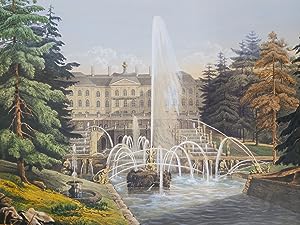
![Bild des Verkäufers für Zeichnungen, 12 blätter in originalgrösse. [Folio of drawings, 12 sheets in original size.] zum Verkauf von Peter Harrington. ABA/ ILAB.](https://pictures.abebooks.com/inventory/md/md31307607384.jpg)
![Bild des Verkäufers für Pokhozhdeniia Chichikova, ili Mertvyia dushi. Poema [The Adventures of Chichikov, or Dead Souls. A Poem] zum Verkauf von PY Rare Books](https://pictures.abebooks.com/inventory/md/md31737482893.jpg)

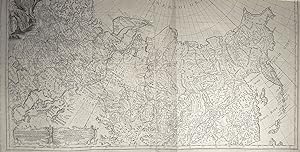
![Bild des Verkäufers für Lidantiu faram [Le Dentu the Beacon] zum Verkauf von PY Rare Books](https://pictures.abebooks.com/inventory/md/md31437088825.jpg)
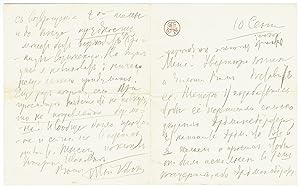
![Bild des Verkäufers für Volshebnyi fonar. Vtoraia kniga stikhov [The Magic Lantern. Second Book of Verse] zum Verkauf von PY Rare Books](https://pictures.abebooks.com/inventory/md/md31416750075.jpg)
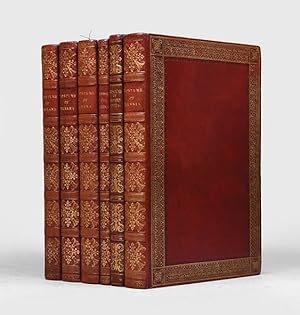
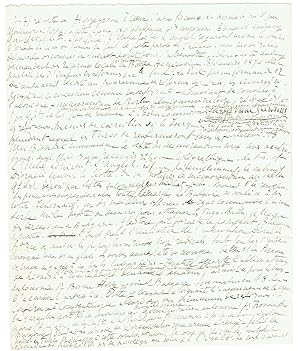
![Bild des Verkäufers für Chto delat? Iz rasskazov o novykh liudiakh [What Is to Be Done? Tales of New People] zum Verkauf von PY Rare Books](https://pictures.abebooks.com/inventory/md/md31818741497.jpg)
![Bild des Verkäufers für Bliznets v tuchakh [A Twin in Storm Clouds] zum Verkauf von PY Rare Books](https://pictures.abebooks.com/inventory/md/md31416751947.jpg)
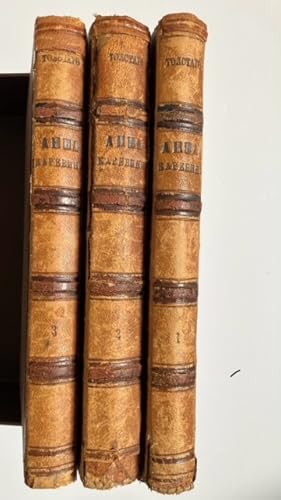
![Bild des Verkäufers für Nash Vestnik. Literaturno-sportivnyi zhurnal Kruzhka Fizicheskogo Razvitiia KFR [Our Newsletter. Literary and Sports Magazine of the Physical Development Club] zum Verkauf von PY Rare Books](https://pictures.abebooks.com/inventory/md/md31818751161.jpg)
